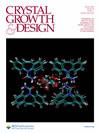脉冲激光沉积外延 SrTiO3/Sr3Al2O6 模板作为 GaAs 生长和脱落的水溶性牺牲层
IF 3.2
2区 化学
Q2 CHEMISTRY, MULTIDISCIPLINARY
引用次数: 0
摘要
尽管砷化镓太阳能电池的效率创下了历史新高,但由于所需的单晶衬底和外延生长成本特别高,其在陆地上的应用受到了限制。水溶性脱膜层可以避免使用有毒和危险的蚀刻剂、基底重新抛光和昂贵的工艺步骤,从而降低成本。Sr3Al2O6 (SAO) 是一种水溶性立方氧化物,SrTiO3 (STO) 是一种包晶氧化物,其中 aSAO ≈ 4 × aSTO ≈ (2√2)aGaAs。在此,我们研究了 SrTiO3/Sr3Al2O6 模板在 STO 和 Ge 基底上的脉冲激光沉积外延生长,以实现 GaAs 的外延生长,其中 SAO 起着牺牲层的作用,而 STO 则在沉积室之间的基底转移过程中保护吸湿的 SAO。我们发现 SAO 薄膜的质量与生长温度和氧气分压密切相关,高温度或高 P(O2) 都会提高质量。优化了沉积参数的薄膜的 XRD 光谱显示,STO/SAO 外延叠层与 STO (100) 基质对齐,而 TEM 分析表明,生长的薄膜在整个厚度上都是外延结晶。STO/SAO 在 Ge 衬底上以高 T 生长,没有有意的 O2 流动,结果产生了一些非外延晶粒和表面凹坑,这可能是由于部分 Ge 氧化造成的。砷化镓是在 STO/SAO/STO 模板上通过金属有机气相外延(MOVPE)生长的。将牺牲的 SAO 溶于水后进行剥离,得到了独立的⟨001⟩优先取向多晶砷化镓。本文章由计算机程序翻译,如有差异,请以英文原文为准。

Pulsed Laser Deposition of Epitaxial SrTiO3/Sr3Al2O6 Templates as a Water-Soluble Sacrificial Layer for GaAs Growth and Lift-Off
Despite the record-high efficiency of GaAs solar cells, their terrestrial application is limited due to both the particularly high costs related to the required single-crystal substrates and epitaxial growth. A water-soluble lift-off layer could reduce costs by avoiding the need for toxic and dangerous etchants, substrate repolishing, and expensive process steps. Sr3Al2O6 (SAO) is a water-soluble cubic oxide, and SrTiO3 (STO) is a perovskite oxide, where aSAO ≈ 4 × aSTO ≈ (2√2)aGaAs. Here, the pulsed laser-deposited epitaxial growth of SrTiO3/Sr3Al2O6 templates on STO and Ge substrates for epitaxial GaAs growth was investigated, where SAO works as a sacrificial layer and STO protects the hygroscopic SAO during substrate transfer between deposition chambers. We identified that the SAO film quality is strongly dependent on the growth temperature and the O2 partial pressure, where either a high T or a high P(O2) improves the quality. XRD spectra of the films with optimized deposition parameters showed an epitaxial STO/SAO stack aligned to the STO (100) substrate, and TEM analysis revealed that the grown films were epitaxially crystalline throughout the thickness. The STO/SAO growth on Ge substrates at a high T with no intentional O2 flow resulted in some nonepitaxial grains and surface pits, likely due to partial Ge oxidation. GaAs was grown by metalorganic vapor-phase epitaxy (MOVPE) on STO/SAO/STO templates. Lift-off after dissolving the sacrificial SAO in water resulted in free-standing ⟨001⟩ preferentially oriented polycrystalline GaAs.
求助全文
通过发布文献求助,成功后即可免费获取论文全文。
去求助
来源期刊

Crystal Growth & Design
化学-材料科学:综合
CiteScore
6.30
自引率
10.50%
发文量
650
审稿时长
1.9 months
期刊介绍:
The aim of Crystal Growth & Design is to stimulate crossfertilization of knowledge among scientists and engineers working in the fields of crystal growth, crystal engineering, and the industrial application of crystalline materials.
Crystal Growth & Design publishes theoretical and experimental studies of the physical, chemical, and biological phenomena and processes related to the design, growth, and application of crystalline materials. Synergistic approaches originating from different disciplines and technologies and integrating the fields of crystal growth, crystal engineering, intermolecular interactions, and industrial application are encouraged.
 求助内容:
求助内容: 应助结果提醒方式:
应助结果提醒方式:


